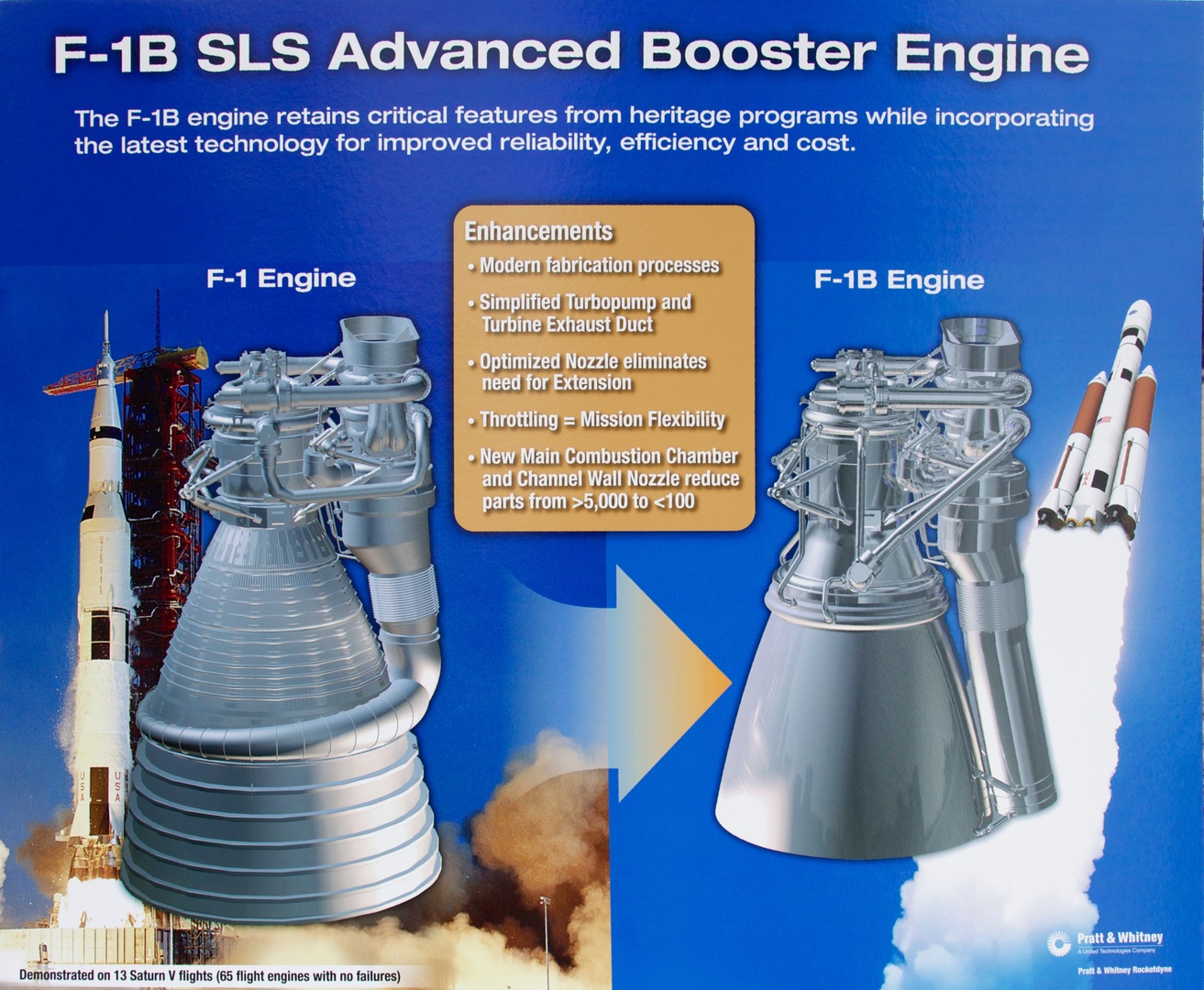Winston
Lorenzo von Matterhorn
- Joined
- Jan 31, 2009
- Messages
- 9,560
- Reaction score
- 1,748
New F-1B rocket engine upgrades Apollo-era design with 1.8M lbs of thrust
4/14/2013
https://arstechnica.com/science/201...es-apollo-era-deisgn-with-1-8m-lbs-of-thrust/
Saturn V “moon rocket” engine firing again after 40 years, sort of
NASA pulls giant engine parts from museums, remakes 'em, and lights 'em up.
1/24/2013
https://arstechnica.com/science/201...t-engine-firing-again-after-40-years-sort-of/
https://en.wikipedia.org/wiki/Rocketdyne_F-1#F-1B_booster
F-1B engine (it lost to the RS-25)
As part of the Space Launch System (SLS) program, NASA had been running the Advanced Booster Competition, which was scheduled to end with the selection of a winning booster configuration in 2015. In 2012, Pratt & Whitney Rocketdyne (PWR) proposed using a derivative of the F-1 engine in the competition as a liquid rocket booster. In 2013, engineers at the Marshall Space Flight Center began tests with an original F-1, serial number F-6049, which was removed from Apollo 11 due to a glitch. The engine was never used, and for many years it was at the Smithsonian Institution. The tests are designed to refamiliarize NASA with the design and propellants of the F-1 in anticipation of using an evolved version of the engine in future deep space flight applications.
Pratt & Whitney, Rocketdyne, and Dynetics, Inc. presented a competitor known as Pyrios in NASA's Advanced Booster Program, which aims to find a more powerful successor to the five-segment Space Shuttle Solid Rocket Boosters intended for early versions of the Space Launch System, using two increased-thrust and heavily modified F-1B engines per booster. Due to the engine's potential advantage in specific impulse, if this F-1B configuration (using four F-1Bs in total) were integrated with the SLS Block II, the vehicle could deliver 150 tonnes to low Earth orbit, while 113 tonnes is what is regarded as achievable with the currently planned solid boosters combined with a four-engine RS-25 core stage.
The F-1B engine has a design goal to be at least as powerful as the un-flight-tested F-1A, while also being more cost effective. The design incorporates a greatly simplified combustion chamber, a reduced number of engine parts, and the removal of the F-1 exhaust recycling system, including the turbopump exhaust mid-nozzle and the "curtain" cooling manifold, with the turbopump exhaust having a separate outlet passage beside the shortened main nozzle on the F-1B. The reduction in parts costs is aided by using selective laser melting in the production of some metallic parts. The resulting F-1B engine is intended to produce 1,800,000 lbf (8.0 MN) of thrust at sea level, a 15% increase over the approximate 1,550,000 lbf (6.9 MN) of thrust that the mature Apollo 15 F-1 engines produced.




